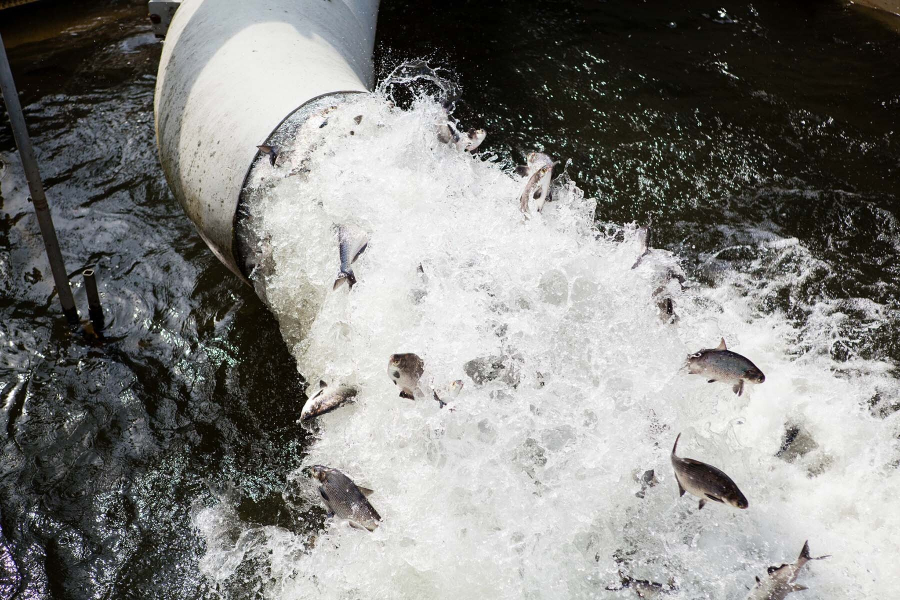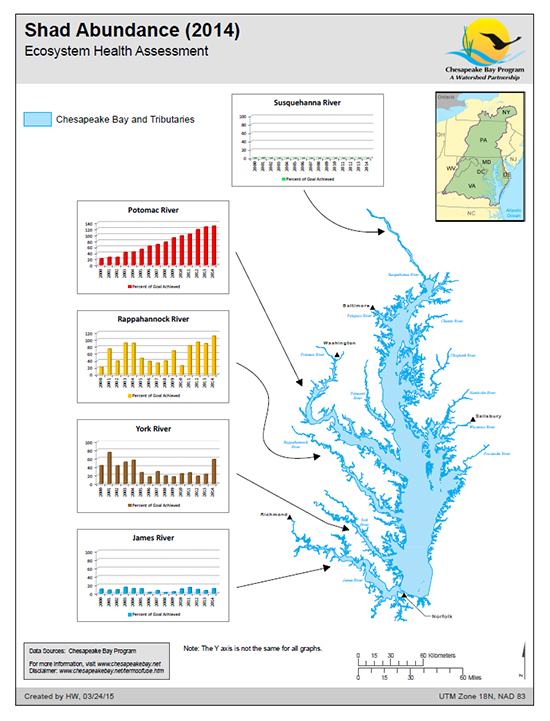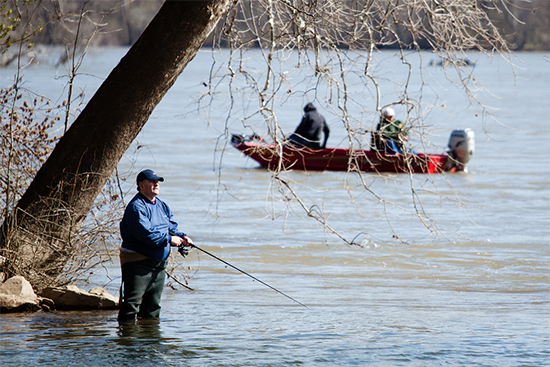Shad abundance surpasses restoration goals in Potomac, Rappahannock
The migratory fish forms a critical link in the Chesapeake Bay food web.

Shad abundance has surged in four Chesapeake Bay rivers, surpassing restoration goals in the Potomac and Rappahannock. While shad populations are critically low along the Atlantic coast, scientists hope to see rising trends continue in these two waterways. Shad spend most of their adult lives in the ocean, migrating into freshwater rivers and streams to spawn. Their return brings food to the Bay in the form of protein-rich eggs, adult shad that can be captured during the spawn and a new generation of shad that can offer forage to striped bass, bluefish and other species as they return to the sea.
Once one of the most valuable fisheries in the Bay, shad populations have declined in recent decades due to pollution, historic overfishing and the construction of dams that block the fish from reaching their spawning grounds. The Bay Program tracks the abundance of American shad in the James, Potomac, Rappahannock, Susquehanna and York rivers as an indicator of watershed health. Collectively, these five waterways account for about 90 percent of the Bay’s shad population, and each has its own population target.
Between 2000 and 2014, shad abundance in the Bay increased from 11 percent to 44 percent of the goal. The Potomac River has seen the most consistent rise in returning shad, but the Rappahannock has also seen notable highs. In 2014, abundance in the Potomac and Rappahannock reached 130 and 110 percent of the rivers’ respective targets.

Scientists attribute these increases to a series of factors, including improvements in water quality; a resurgence in underwater grass beds; moratoriums on shad harvest; an increase in habitat available to migratory fish; stocking efforts that reprint fish to rivers and kick-start local populations; and the overall suitability of the Potomac, in particular, as shad habitat.
“The Potomac River shad population has surpassed its sustainability target,” said Jim Cummins, director of living resources for the Interstate Commission on the Potomac River Basin and co-chair of the Bay Program’s American Shad Indicator Action Team. “But we want to see recovery continue until a robust population is once again providing ecological benefits and supporting a fishery that includes some recreational harvest. Hopefully, in the not too distant future, anglers will be able to enjoy shad on the table and at the end of a line.”

Shad abundance remains negligible in the upper James and Susquehanna and variable in the lower James and York. Some variability is natural, but the continued scarcity of shad in the upper James and Susquehanna can be attributed to large dams. Through the Chesapeake Bay Watershed Agreement, the Bay Program has committed to opening more stream miles to migratory fish and improving our capacity to understand the role forage fish populations play in the Bay ecosystem.

Comments
This is awesome news and an indication that we are on the right track. We know what needs to be done. When and where we can do that, we see the direct results of our efforts. Another indication that the Chesapeake Bay ecosystem is in recovery!
Thank you!
Your comment has been received. Before it can be published, the comment will be reviewed by our team to ensure it adheres with our rules of engagement.
Back to recent stories